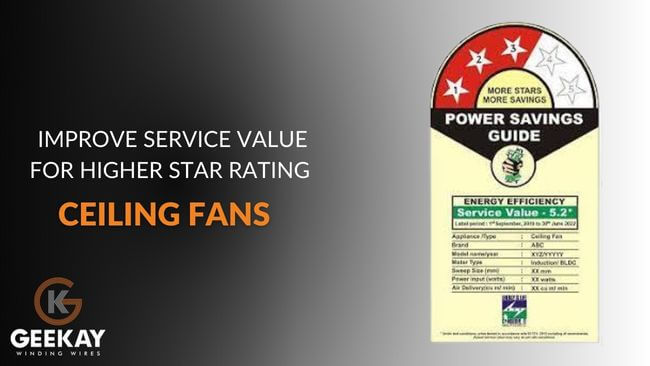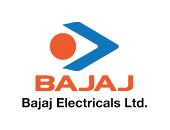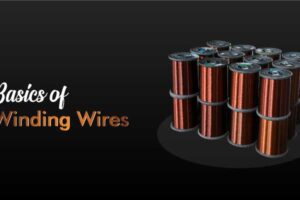The BEE star rating mandate for ceiling fans came into effect on July 1st 2022. This standard requires all fans manufactured, imported or sold in India to be energy efficient. This regulation prevents the sale of new fans not conforming to the standard.
Apart from the quality mandate from the Government, fan consumers are getting increasingly energy conscious. When it comes to buying a new fan, they opt for models that have a higher star rating to benefit them in the long run.
As a fan manufacturer, it is time for you to innovate and upgrade to improve the energy efficiency of all your fan models. Getting a higher star rating is the right approach towards that.
Before we dive into tweaking the performance for a good rating, let us see how ceiling fans are rated.
What is the BEE Star Rating for Ceiling Fans
BEE or Bureau of Energy Efficiency is a standards organisation associated with the Ministry of Power. IS 374:2019 is the rating standard issued by them for ceiling fans in India. This standard enforces new ceiling fans to meet some specific safety and performance requirements to qualify as energy efficient.
Ceiling Fan Star Rating – Performance Requirements
Based on the blade size, fans need to meet the minimum performance requirement to be eligible for star ratings. To evaluate the performance of a ceiling fan, a metric called Service Value is used by BEE.
Here, the Service value indicates the volume of air delivered per wattage of energy consumed. The higher the service value, the better energy-efficient the fan is.
Performance Value for Fans (Clauses 15.1 and 15.2 of IS 374:2019)
| Sr No | Fan Blade Size
(mm) |
Minimum Air Delivery (m3/minute) | Minimum Service Value
(m3/minute/Watt) |
| 1 | 900 | 130 | 3.1 |
| 2 | 1050 | 150 | 3.1 |
| 3 | 1200 | 210 | 4.0 |
| 4 | 1400 | 245 | 4.1 |
| 5 | 1500 | 270 | 4.3 |
Not meeting the minimum service value in the lab test declares the fan model ineligible for the star rating. They have to improve the performance of the model and reapply.
Here is the service value and star rating chart for fans of different blade sizes.
|
Service Value |
||||
| Star Rating | Blade Size <1200 (i.e. 900mm to 1050mm) | Blade size 1200 mm | Blade size 1400 mm | Blade size 1500 mm |
| 1 star | ≥ 3.1 to < 3.6 | ≥ 4.0 to < 4.5 | ≥ 4.1 to < 4.5 | ≥ 4.3 to < 4.5 |
| 2 star | ≥ 3.6 to < 4.1 | ≥ 4.5 to < 5.0 | ≥ 4.5 to < 5.0 | ≥ 4.5 to < 5.0 |
| 3 star | ≥ 4.1 to < 4.6 | ≥ 5.0 to < 5.5 | ≥ 5.0 to < 5.5 | ≥ 5.0 to < 5.5 |
| 4 star | ≥ 4.6 to < 5.1 | ≥ 5.5 to < 6.0 | ≥ 5.5 to < 6.0 | ≥ 5.5 to < 6.0 |
| 5 star | ≥ 5.1 | ≥ 6.0 | ≥ 6.0 | ≥ 6.0 |
Source: BEE Star Label
It is evident that to get a higher rating, you have to get a higher service value. But how?
How to improve service value for a higher star rating?
There are two ways to improve service value for a higher star rating – increasing the airflow as well as increasing the motor efficiency.
1. Increase the airflow by improving the blade design
The blade shape, number of blades and blade pitch determine the airflow of a ceiling fan. You can increase air delivery by
Enhancing Blade Aerodynamics
Switching to an air-foil shape from flat blades decreases air resistance.
Modifying Blade length
Increasing the blade size and the number of blades improves airflow. (But this in turn increases the weight and drag, making it less energy efficient.)
Optimising Blade Pitch
Increasing the blade angle also increases airflow. The optimal blade pitch for residential fans is 12-15 degrees or lesser based on the design.
Similarly, for airfoil-style blades varying blade angle over the length of the fan blade can give maximum airflow. Say, giving a steeper angle towards the centre of the fan can give better airflow as fan speed is low here. Likewise, towards the tips fan speed is high and to limit the drag and maximise energy efficiency, go for shallower angles.
2. Reduce Power consumption by making the motor energy efficient
The motor is the heart of a ceiling fan and optimising its performance increases the overall energy efficiency.
Type of Motor
The type of motor used in ceiling fans determines its energy efficiency. The energy efficiency of BLDC motors is higher than that of PMDC and Induction motors.
Usage of Pure Materials
The winding coil is the key component of a fan motor. Copper and Aluminium are widely used winding materials for their good conductivity and cost efficiency. Using pure copper and aluminium instead of recycled ones can help lower power consumption, thus increasing the star rating.
Type of Winding
Copper has high electrical conductivity ( 5.96 x 107 S/m). Thus copper wire offers less resistance to the current flow, resulting in less heat dissipation. A fan with copper winding wire consumes less power when compared to a similar fan with aluminium winding wire.
The cross-sectional area of copper winding is less than aluminium winding, enabling tight winding. This in turn allows you to maximise the wire inserted in each slot, thus maximising the torque.
However, due to the increased cost of manufacturing some manufacturers are opting for aluminium winding which can give good results with a proper design. The limitations are
(i) reduced efficiency of manufacturing when using aluminium wires due to the low tensile strength of aluminium and
(ii) making end connections in aluminium more difficult than in the case of copper.
To improve star ratings, the quality of components used in ceiling fan manufacturing matters a lot. Geekay is a leading winding wire supplier focused on quality and cost economics. Check out our winding wire offering for the fan industry.











